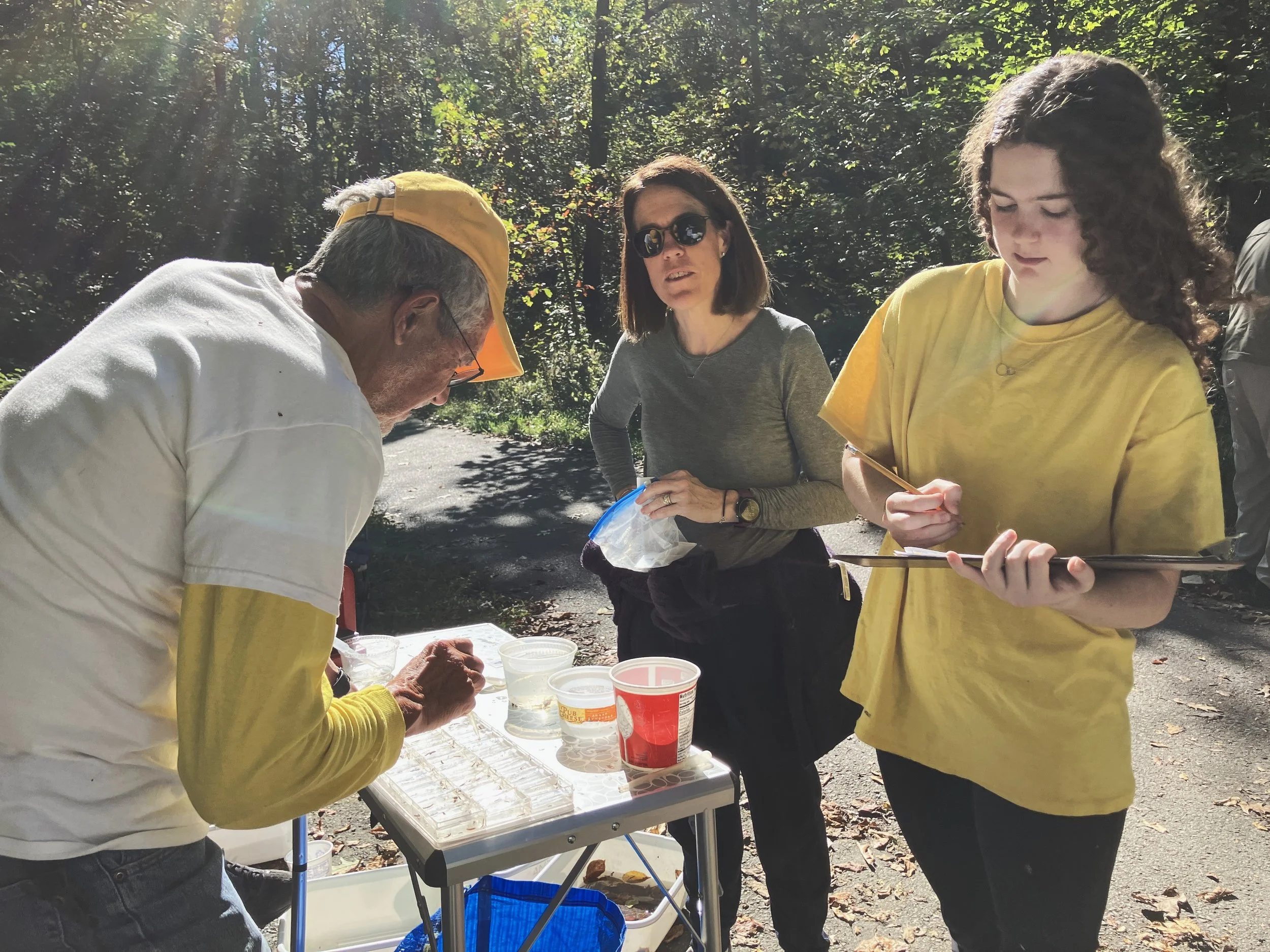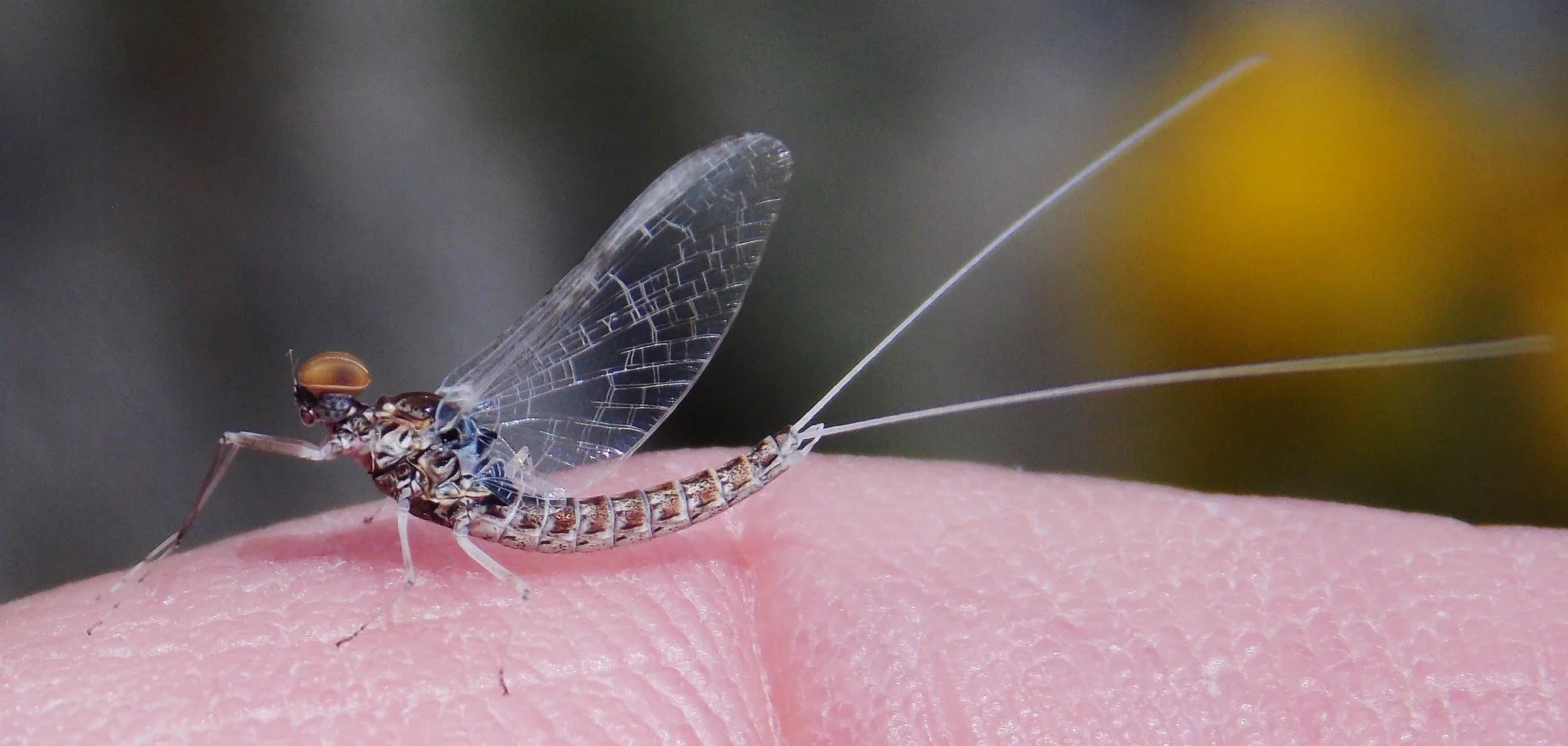Benthic Macroinvertebrate Monitoring
LFWA volunteers have been monitoring the biological health of the Little Falls Branch at a by sampling for creek critters (benthic macroinvertebrates) on a quarterly basis since 2016. Our testing site is located a quarter mile down stream from the Mass. Avenue Little Falls Stream Valley Park Entrance in Bethesda. The team is part of the Nature Forward Water Quality Monitoring Program. Our most recent monitoring indicates the creek is in FAIR health.
| Sample Date | ANS IBI Score | Total Count | Aquatic Worms, Flatworms, Planarians | Caddisflies | Clams | Dragonflies and Damselflies | Leeches | Mayflies | True Flies | Sow Bugs |
|---|---|---|---|---|---|---|---|---|---|---|
| Summer 7/9/23 | POOR to FAIR (2.1) | 104 | Aquatic worms (3) Flatworms (24) | Common Netspinners (13) | Asian Clam (2) | 0 | 0 | Small Minnow Mayflies (34) | Black Flies (11) | 17 |
| Spring 4/8/23 | POOR (1.9) | 104 | Flatworms (8) | Common Netspinners (7) | 0 | 0 | 0 | Small Minnow Mayflies (4) | Black Flies (55) Midges (26) Crane Fly (1) | 3 |
| Winter 2/11/23 | POOR (1.9) | 79 | Flatworms (6) | Fingernet Caddisfly (1) Common Netspinners (3) | 0 | 0 | 0 | 0 | Black Flies (30) Midges (35) | 3 |
| Fall 10/12/22 (Sampling aborted by water main break) | POOR (1.0) | 80 | Aquatic worms (3) Flatworms (47) | Common Netspinners (8) | 0 | 0 | 0 | Small Minnow Mayflies (2) | Black Flies (8) Midges (2) | 10 |
| Summer 7/19/22 | POOR TO FAIR (2.1) | 108 | Aquatic worms (2) Flatworms (32) | Common Netspinners (20) | 0 | 0 | Cyindrical Leech (2) | Small Minnow Mayflies (35) | Black Flies (7) Midges (2) | 6 |
What is Benthic Macroinvertebrate Monitoring?
Aquatic worm, cadisfly and other macroinvertebrates.
The health, or condition, of a watershed stream is determined by periodic sampling of the biological community (i.e., fish and bugs). They are subject to any changes in water quality or habitat that might occur. In benthic macroinvertebrate monitoring, we look at the number and types of aquatic larva and other macroinvertebrates that live on the bottom of the creek and use this number to calculate an Benthic Index of Biotic Integrity (BIBI) score, These scores are used to determine the condition of the stream (i.e., Poor, Fair, Good, or Excellent). The National Audubon Society (ANS) criteria for stream health is summarized below.
| Health Rating | ANS IBI Score | Explanation |
|---|---|---|
| Poor | 1.0 - 2.0 | Poor conditions most often occur in places where changes made to the natural environment have substantially altered the structure of the biological community. |
| Fair | 2.0 - 3.2 | This condition describes many streams in suburban areas with some stormwater management, as well as areas that have had major agricultural impacts. |
| Good | 3.2 - 4.4 | These conditions are often found in the less developed areas of the county, suburban areas with the latest stormwater management techniques, and areas with lots of protected land in their watershed. |
| Excellent | 4.4 - 5.0 | Most often, only highly forested watersheds with minimal development are in excellent condition. Here our most sensitive fish and stream bugs live. |
Volunteers use D-nets to capture the organisms. After netting 20 places along a 75 yard section of creek, the organisms are sorted and identified. A sample score sheet is shown below. The macroinvertebrates get points for their tolerance for pollution. Lower scores are better. Although, we might find more than 100 organisms, we stop counting when we reach 100 or so.
why is our creek is so impaired?
The main threat to our creek, and in fact most urban creeks, isn’t chemical pollutants, but stormwater run-off. Our densely populated area is 35 percent or more paved over. Driveways, sidewalks, streets, parking lots and houses are all impervious surfaces which prevent the water from soaking into the ground when it rains. Instead, the water runs off these surfaces into the storm drain system which flows directly to the creek. You can see the concrete inlets as you walk along the banks.
Every time it rains, the water coming into the creek is like a little tsunami; the volume and velocity blowing out the banks, causing erosion and habitat destruction. The dirt from the erosion buries the rocks that the benthic macro-organisms call home. You can tell just from looking at how buried the rocks are that our creek is not hospitable for the little critters. They prefer to live under the rocks not on the sides or top.
what You can do to help
The life of an urban stream is very hard. Besides the flooding when it rains, streams depend on ground water for their base flow. If rain water isn’t soaking into the ground, the base flow of the creek is impaired too. The most important thing that homeowners can do is manage stormwater on their property, so that it soaks into the ground and doesn’t run-off into the storm drain system.
Montgomery County has rebates for residents, non-profits and business for doing stormwater management on their property. Click HERE to learn more about how you can manage stormwater and the importance of getting water back into the ground for our natural areas
Join our Stream Team
Our stream team is made up of volunteers who have taken the ANS Stream Ecology and Macroinvertebrate training. We have more than a dozen team members and at any given monitoring session, we have 4 or 5 participants. Our team leader, Frank Sanford, is certified in macroinvertebrate identification by ANS after extensive training and testing. We are always looking for new volunteers to join the team. Visit HERE to learn more about our stream team and learn how you can get involved. LFWA will offer scholarships to anyone who takes the ANS training and joins our monitoring team.
Field Notes and historical data
2016 Spring - our very first year monitoring.







